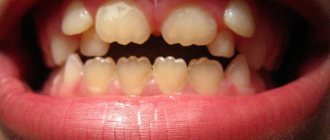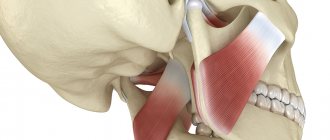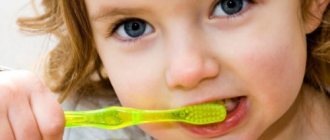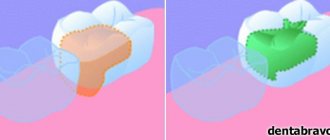An increase in temperature is a protective reaction of the body. In this way, the body tries to kill viruses and infections that have entered. Therefore, high temperature is a symptom of many diseases. Most often, this becomes a reason to seek medical help.
The health of a child is a very sensitive topic for every loving parent. There is no need to rush and try to bring down the temperature with medications. Most often, antipyretics prevent the immune system from producing antibodies, that is, fighting viruses and infections on its own. Thus, the human immune system becomes weaker. It is better to contact a specialist who will prescribe a course of treatment.
If it is not possible to see a doctor, then there are several things to consider. It is important in this case to understand what caused the jump in the child’s body temperature. Typically, fever is a symptom of a wide range of diseases - from acute respiratory viral infections to kidney inflammation. Before you start lowering your child's temperature, it is important to consider the numbers on the thermometer.
What to do if a child has a temperature of 38°C?
If the thermometer showed such a figure, then there is no need to panic. Doctors consider it to be moderately elevated, and in most cases it is safe. However, the problem should not be overlooked.
Pediatricians call this condition fever. This is one of the signals that the child is sick. Usually this temperature does not last long - a couple of days at most. To bring your baby back to normal, it is recommended to surround him with the necessary care and attention.
Children under six months of age with a temperature of 38ºC or higher should seek immediate medical attention. You should not give your baby antipyretics until examined by a pediatrician.
Actions that will help your child get back to normal faster:
- Provide plenty of fluids. It is important that the temperature of the liquid matches body temperature;
- Do not give your child liquids that he has not drunk before. This is done so as not to cause allergies;
- Don't force your baby to eat. If he refuses to eat, then it is better to listen to him and abstain;
- There is no need to force your child to lie in bed. Let him spend this period where he is comfortable;
- Measure body temperature every 2 hours. If growth is observed, then you need to call an ambulance.
We can say that fever also has positive properties. It helps to activate the body's defenses, accelerates metabolic processes, stimulates energy production to fight infection and restore tissues damaged as a result of the disease.
What to do if a child has a temperature of 39 ºC?
A temperature of 39ºC is considered high for a child’s body. However, in this case, you should also not give an antipyretic without consulting a doctor. A child’s fever is an excellent opportunity for the body to fight off the infection on its own. In this way, immunity to the outside world is developed. In addition, some drugs can cause an allergic reaction or a number of side effects, so it is better to consult a specialist first.
What to do if a child has a temperature of 39ºC?
- Seek medical help;
- Do not wrap your child in a blanket to make him feel even hotter;
- Doctors recommend wiping the baby with a damp towel;
- It is better to abandon the old-fashioned methods - do not wipe your child with vinegar or alcohol, as an allergic reaction or intoxication may occur;
- Apply a cool compress to the forehead;
- Give as much liquid as possible - warm milk, water, compotes and fruit drinks.
The child has a fever without symptoms
Sometimes fever can occur without symptoms. In this case, too, you should not panic. There are a number of explanations for this. Situations with a high temperature in a child without symptoms of disease can be divided into two conditional groups:
- normal temperature fluctuations;
- periodic surges or prolonged feverish states associated with certain pathologies or inflammatory processes.
A child’s temperature without signs of a cold can be caused by the following reasons:
- Overheat. In summer, children often play outside in the sun in the heat, which increases the heat flow in the body. Usually, along with this, the body loses a lot of fluid due to sweating. Dehydration plus being outside in hot weather can cause your temperature to rise. For young children, there are other reasons for overheating and thermal imbalance, for example, excessive physical activity and excessive fatigue;
- Allergy. It can manifest itself as a rash on the surface of the skin or as an elevated body temperature;
- Reaction to vaccination. This is a normal behavior of the body in response to vaccination; in the case of using live vaccines, the fever can last up to 3 days;
- Physiological fever. Usually seen in newborns. Their body reacts sharply to any changes in external temperature. In this case, there is no need to be afraid - within a few hours or days, a stable and normal temperature is established;
- Frail nervous system. Children have a weak, unstabilized psyche, so against the background of prolonged crying, loud extraneous sounds and other irritating factors, an increase in temperature without obvious symptoms is possible;
- Teething. This process weakens the child’s body, which is why the baby experiences a fever.
Clinical picture of ascariasis and enterobiasis in children at the present stage
What are the difficulties in diagnosing helminthiases? What is the treatment for helminthiasis?
Against the background of global environmental changes, the widespread use of immune, antibacterial and other drugs, frequent violations of adaptation processes (adaptation diseases), constant stress, increasing levels of education and culture of the population, many long-known human diseases have changed their clinical picture. Some symptoms practically ceased to occur, while others, on the contrary, began to come to the fore. This also applies to diseases caused by helminths, in particular parasitic roundworms (nematodes). In the temperate zone, the most widespread nematodes are roundworms and pinworms.
Helminths can cause dysfunction of the gastrointestinal tract (GIT), cause allergic (or pseudoallergic) reactions or aggravate them, cause intoxication, and also be a factor that weakens the immune system [2]. Nowadays, cases of massive infestation are rare, when diagnosis does not cause difficulties, and helminth balls cause intestinal obstruction - much more often helminths have become the cause of the development of allergic problems. At the same time, helminthiases are among those diseases that are difficult to diagnose due to objective and subjective difficulties (long periods of absence of oviposition, the possibility of the absence of females among the parasitic individuals, the likelihood of technical errors). Therefore, it is important to know the clinical picture of these diseases in order to be able to prescribe an in-depth examination or effective therapy based on a combination of indirect signs, even without direct evidence of the presence of helminthiasis.
In order to evaluate the clinical picture of nematodes, complaints, anamnesis and examination results of 150 children were analyzed in whom roundworms (116 children), pinworms (27 children), roundworms and pinworms (7 children) were found. Helminths were identified using standard methods: detection of roundworm eggs in feces using a smear method or pinworm eggs in a scraping for enterobiasis, as well as visual detection of roundworms or pinworms in feces, vomit, or during surgical or endoscopic intervention in the abdominal cavity or rectal area [3].
Among the children there were 67 boys and 83 girls. The age distribution is presented in table. 1. Children of primary preschool age (from one to three years old) predominated, their number was 63%. It is at this age that the greatest epidemiological preconditions for the appearance of nematodes occur.
In 150 children with proven infestations of roundworms and/or pinworms, the following clinical manifestations were noted.
107 children (71.3%) had allergic problems: skin rashes, diathesis, atopic dermatitis, neurodermatitis - 99 (66%), of which 18 had periodic problems, two children, in addition to skin rashes, had conjunctivitis ; ten (6.7%) had a proven food allergy to some foods with high levels of specific IgE in the blood serum; Six children (4%) had an asthmatic component or were diagnosed with bronchial asthma.
113 children (75.3%) had gastrointestinal dysfunction: unstable stool, undigested stool, the presence of “green” and mucus in the stool - in 66 (44%); constipation or a tendency to constipation - in 55 (36.7%), 17 children (11.3%) had unstable stool with a tendency to constipation, i.e. periods of normal or liquefied stool alternated with periods of constipation; flatulence, manifested by increased gas formation, bloating, rumbling, belching, occurred in 30 children (20%); nausea, vomiting, and regurgitation were observed in 29 children (19.3%).
In 60 (40%) children who, by age, could complain of abdominal pain, abdominal pain syndrome was noted: most often so-called “flying pains” were noted, which occurred regardless of food, periodically, usually without a specific localization or localized around navel (in the paraumbilical zone). Such pains went away on their own without medications or while taking sorbents and antispasmodics; some children needed to lie down for a while; Pain syndrome of this nature was observed in 54 children (36%). In eight children (5.3%), abdominal pain was constant, often associated with food (occurring after eating), intense, and often required drug treatment and hospitalization to exclude acute surgical pathology; one child underwent an appendectomy for this reason, and roundworms were found in the appendix with catarrhal changes; Two children had abdominal pain syndrome of both types.
66 children (44%) had appetite disturbances: in 54 (36%) appetite was often reduced or selective; in 12 (8%) - increased (the child is constantly hungry). Often, when asked about appetite, parents answered “when and how,” i.e., there were periods of normal appetite and decreased or increased appetite. In assessing this indicator, there is a large amount of subjectivity, since parents assess their children’s appetite differently.
Bruxism (teeth grinding) - a symptom that is often associated with helminthic infestations, but in fact is a nonspecific sign of intoxication of the central nervous system and can accompany any chronic intoxication - was noted in 25 children (16.7%).
Night sleep disturbances were observed in 81 children (54%): restlessness in the evening, difficulty falling asleep - in 15 children (10%); restless night's sleep (screaming, moaning, tossing and turning in sleep, waking up, crying, insomnia, nightmares) - in 76 (50.7%). Some parents of older children found it difficult to characterize the child's nighttime sleep, because the child sleeps in another room. Problems with falling asleep and sleeping at night are an important symptom of helminthic infestations, since it is known that intestinal nematodes (including roundworms and pinworms) are often activated at night.
54 children (36%) had itching and/or redness in the anus (anal escoriation) - in 43 children (28.7%); itching - in 38 (25.3%); both symptoms - in 27 (18%). Anal escoriation and itching are considered symptoms of enterobiasis (pinworms), but out of 54 children who had these symptoms, enterobiasis was proven in 17 children (31.5% of the number of children with these symptoms). In another 37 children (68.5% of the number of children with these symptoms), the presence of ascariasis was proven, but pinworms were not detected either visually or in tests. This may indicate either that in these cases there were pinworms that were not diagnosed, i.e., helminthiasis was mixed, or that anal escoriation and itching are symptoms characteristic not only of enterobiasis, but also of ascariasis.
29 children (19.3%) showed signs of general weakening of the immune system: frequently or long-term ill children (according to the generally accepted classification of Monto J. et al., 87) - 18 children (12%); recurrent stomatitis and gingivitis were observed in 13 children (8.7%); dental caries - in six (4%); recurrent purulent diseases of the skin or mucous membranes - in three (2%).
15 children (10%) had the results of a blood test of their immune status: 13 children had a reduced number of T cells; in all 15 children the number of T-helper cells was reduced, and in six of them it was significantly reduced; in 12 children the helper-suppressor ratio was reduced; in seven children there was a decrease in the level of IgA (secretory immunoglobulin), including in three a significant decrease, while in the remaining eight children the level of IgA in the blood serum was either normal or elevated; Six children had a decrease in the number of lymphocytes, including one child who had severe lympho- and neutropenia. These results confirm the known data that roundworms and pinworms have a depressing effect on immune function, and that people with weakened immune systems are more likely to develop helminthiasis [1].
49 children (32.7%) had various symptoms that can also be associated with the effects of helminths on the body: “geographical” tongue - in 12 children (8%); retardation in physical development, insufficient weight gain or weight loss over a period of time - in 21 children (14%); a painful appearance (blue under the eyes, pallor) was detected during examination in seven children (4.7%); Ten children (6.7%) had bad breath, especially in the morning; increased fatigue, asthenic syndrome - in eight children (5.3%); emotional lability, capriciousness, irritability of the child - in four (2.7%), and this indicator is subjective, as is the parents’ assessment of appetite; hypersalivation, another symptom usually associated with helminthiasis, was observed in three children (2%); various manifestations of hypovitaminosis, including rickets - in five children (3.3%). Often, during examination, changes in the skin in the form of “goose bumps” were revealed.
Most children had more than one symptom. Summarized data on the clinical picture are presented in table. 2.
Therapy in all cases consisted of two stages: first, anthelmintic therapy, and two different drugs were prescribed (decaris and vermox) with an interval of three to five days between them in order to maximally cover the different stages of the life of helminths; some time after anthelmintic therapy - drugs for microbiological and functional correction. Accordingly, the results of anthelmintic therapy, the results of the entire treatment, as well as follow-up within six months after therapy were assessed. In most cases, improvement occurred quickly during treatment. In 36 children, only after anthelmintic therapy, allergic manifestations significantly decreased or completely disappeared, in 39 children, after the first stage of therapy, the functioning of the gastrointestinal tract normalized, in 41 children, abdominal pain immediately stopped, and other symptoms also improved after anthelmintic drugs. This confirms that the symptoms were caused by the presence of helminths.
92 children had no complaints after the entire treatment; about 37 there is no data on changes in condition during and after treatment; in 16 children the effect was incomplete, i.e. some symptoms persisted after the end of treatment; in four children the effect of therapy was unstable, since relapses occurred after the end of treatment; Three children had no effect from therapy.
Literature
1. Blagova N. N. Some immunity factors in patients with ascariasis and enterobiasis during treatment with albendazole.
Author's abstract. dis. ...cand. honey. Sci. St. Petersburg, 1997. 2. Bogoyavlensky Yu. K., Rachkovskaya I. V., Chebyshev N. V. Nematodes and anthelmintics. M., 1994. 3. Laboratory diagnosis of parasitic diseases: https://www.infectology.spb.ru/. Bulletin of infectology and parasitology. Table 1. Age distribution
| Age | Up to 1 year | 1 – 3 years | 37 years | 7 – 12 years | 12 – 15 years |
| Number of children | 9 | 94 | 23 | 18 | 6 |
back
Table 2. Clinical picture of intestinal nematodes
| Complaints | Amount of children | % of total |
| Allergic problems | 107 | 71,3 |
| Gastrointestinal dysfunction | 113 | 75,3 |
| Abdominal pain syndrome | 60 | 40 |
| Appetite disorders | 66 | 44 |
| Bruxism (teeth grinding) | 25 | 16,7 |
| Night sleep disorders | 81 | 54 |
| Anal escoriation and/or itching | 54 | 36 |
| Signs of weakened immunity | 29 | 19,3 |
| Other symptoms | 49 | 32,7 |
back
Vomiting, diarrhea and fever in a child
Such a serious condition occurs due to intoxication, therefore, in the complex treatment of such conditions, drugs are prescribed that rid the body of toxins. Experts identify a number of diseases that are accompanied by exactly this set of symptoms. Among them there are food poisonings contaminated with various microorganisms.
In case of diarrhea, vomiting and fever in a child, it is recommended to take sorbents, consume large amounts of non-carbonated liquid and maintain an optimal temperature in the room, and frequently ventilate the room.
Treatment of diarrhea in a child
Therapy consists of providing adequate oral (or, less commonly, intravenous) rehydration. Antidiarrheal drugs (for example, loperamide) are generally not recommended for children in the first year of life and early childhood. Sorbents are often prescribed. For chronic diarrhea, adequate nutrition should be maintained, especially the intake of fat-soluble vitamins. In case of illness, special methods for treating diarrhea in children are prescribed (for example, a gluten-free diet for celiac disease).
Many parents do not know what to do if their child has acute diarrhea or periodic diarrhea. In any case, you need to consult a doctor. First, you should call a pediatrician at home or use an online consultation at the RebenOK clinic. The doctor will conduct an initial examination and, if necessary, prescribe the necessary examinations. The specialist will tell you how to treat diarrhea in a child and give additional recommendations.
Temperature candles for children
Candles can be used to treat adults and children. Components that promote healing are absorbed through the intestinal mucosa, enter the bloodstream and spread throughout the body, providing an antipyretic effect. The process bypasses the upper gastrointestinal tract without causing irritation. Their main difference from capsules and tablets is that the components necessary for treatment enter the body faster, and accordingly, recovery will occur sooner.
Temperature candles for children:
- Efferalgan. Their active substance is paracetamol, which blocks the center of pain and thermoregulation. Suppositories are used for elevated body temperature, acute respiratory viral infections, influenza, infectious diseases and reactions to vaccines. They can also act as an anesthetic for dental, headache, muscle and other types of pain.
- Panadol. Experts classify these suppositories as analgesics. Their use can reduce pain and lower body temperature. You should not use more than 4 suppositories per day. Without consulting a doctor, treatment should last no longer than 3 days.
- Cefcon D. This drug attracts with its affordable price - 50 rubles per pack. The main active ingredient is paracetamol of varying dosages. The effect of use will be felt after 30 minutes. Also great for lowering fever in babies and newborns.
Establishing diagnosis
The medical history focuses on the frequency and type of stool, and also relies on associated symptoms. The addition of temperature and vomiting indicates an infectious lesion of the gastrointestinal tract. The nature of the diet matters. Information about diarrhea, which began after the introduction of certain cereals (oats, wheat), indicates gluten enteropathy (celiac disease), information about a violation of the type of stool after including other products in the diet indicates food intolerance.
When examining the patient, the presence of signs of dehydration is taken into account, the general condition is assessed, and the abdomen is examined and palpated. Delay in physical development indicates more serious abnormalities in the body. In children with suspected cystic fibrosis, the condition of the internal organs is assessed.
Laboratory and instrumental research includes:
- determination of electrolyte levels during dehydration;
- determination of sodium and chlorine concentrations if cystic fibrosis is suspected;
- if an infectious process is suspected, examination for viruses, bacteria and parasites.
With celiac disease, an increased amount of specific antibodies is found in the blood. Diet changes can be used for both diagnosis and treatment.
Troychatka from temperature for children
At elevated temperatures, doctors prescribe medications that relieve painful symptoms. Triad is considered one of the most effective remedies for the disease. This is a preparation of three natural herbs.
The troika for fever helps to cope with acute respiratory viral infections and influenza. This remedy can be used when a child has an elevated temperature due to an inflammatory process, seasonal cold or flu.
An example of such a miracle cure is Troychatka from Evalar. This is a specially developed herbal complex of extracts of three herbs with an antiparasitic effect. This drug does not cause allergies in the baby, as it consists of natural ingredients - extracts and flowers of tansy, wormwood and clove buds.
All of the above medical drugs can be purchased, as well as order the manufacture of drugs in the Gubernskiye Pharmacies network at a reasonable price. Place an order in our online store or call 2911-555.







